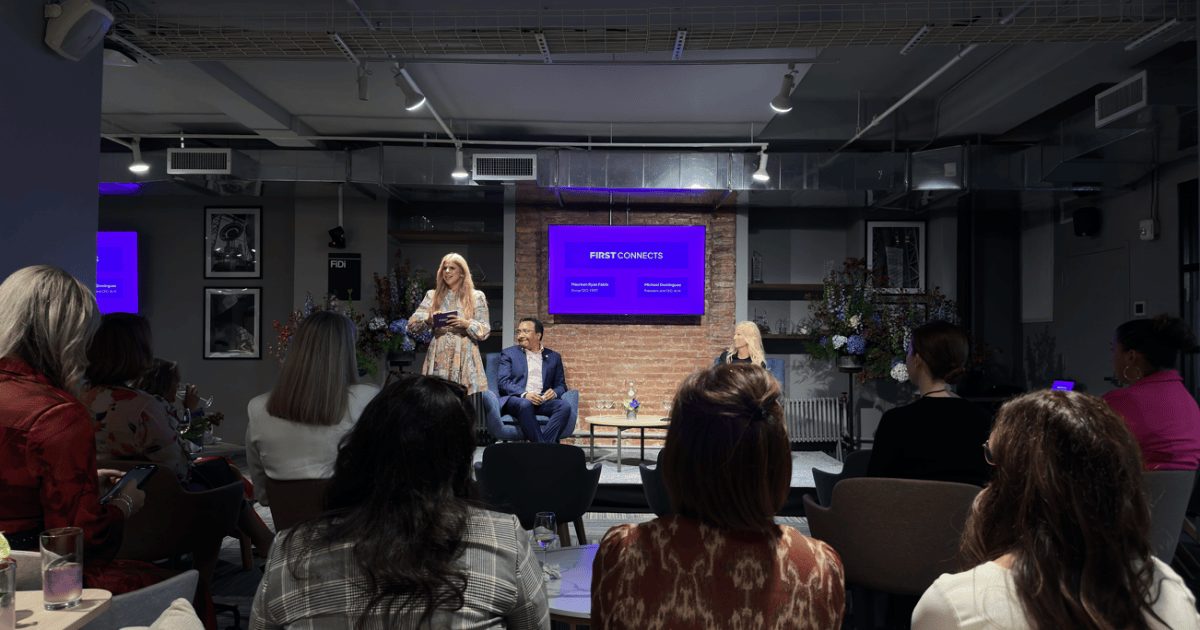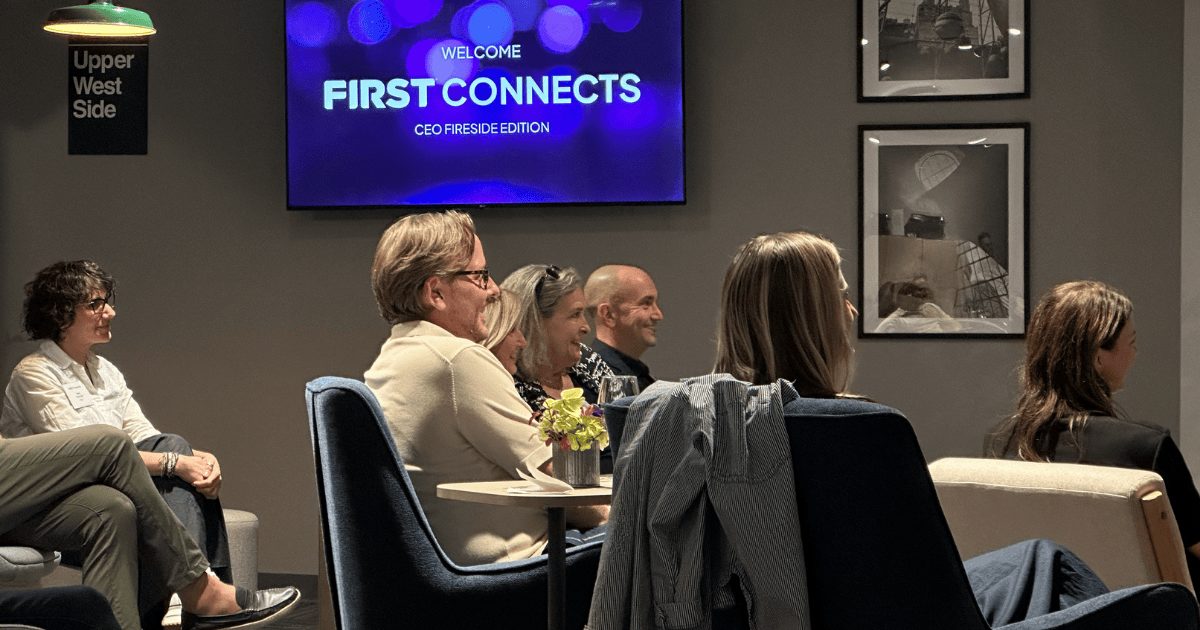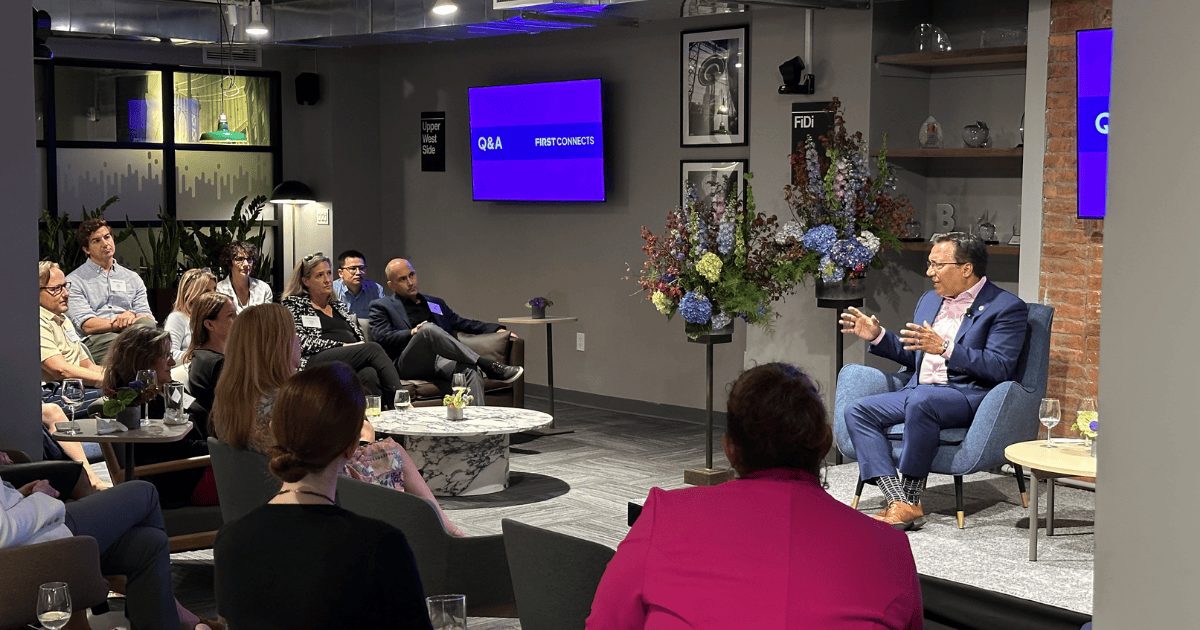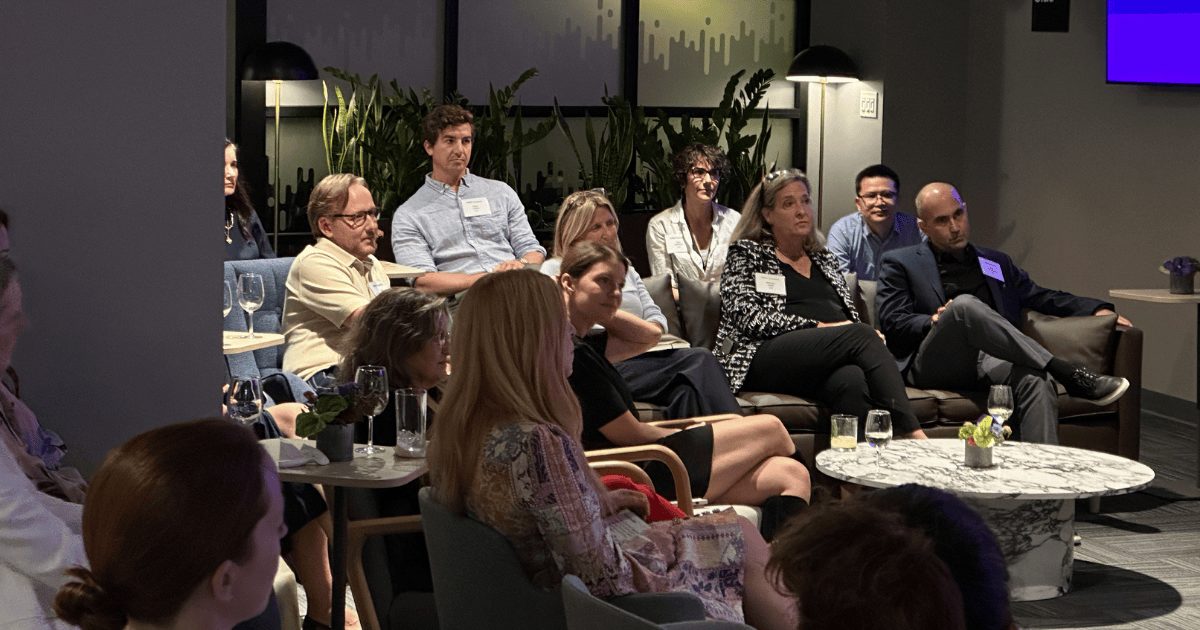The Future of Meetings & Hospitality:
FIRST Connects
Together, they explored the future of meetings and hospitality – from hotel pricing discipline and workforce shifts to AI, sustainability, and the 2026 World Cup. Their dialogue blended Maureen’s perspective on human connection and creative leadership with Mike’s data-driven outlook on industry trends.
Below are key excerpts from their conversation, highlighting the trends shaping the future of meetings and hospitality.
Overview
How would you describe the overall health of the meetings and hospitality industry right now?
Maureen Ryan Fable:
“We’ve heard so many conflicting headlines, some say the industry is slowing, others that demand is strong. How would you describe the health of the industry today?”
Mike Dominguez:
“The industry is healthier than the headlines suggest. Occupancy in 2025 is sitting at 91.3%, slightly higher than last year’s 91%, despite news cycles warning of a decline.
Yes, there was a dip in spring 2024 when tariffs caused a pause, but trends bounced back strongly in the fall. Corporate clients are booking further out, associations are back, and we’re already pacing ahead for 2026. The biggest challenge now is securing space early – the demand is there.”
Key Takeaway:
Despite mixed headlines, the meetings industry is stable and growing, with occupancy near record levels.


2026 World Cup
What impact will the 2026 World Cup have on meetings and events?
Maureen Ryan Fable:
“Let’s talk about one of the biggest disruptions on the horizon: the 2026 World Cup. What should planners be preparing for?”
Mike Dominguez:
“2026 is going to compress 12 months of meetings into 10. With 13 U.S. and North American venues hosting games, hotels and convention centers will be at capacity.
Sponsors are restricting meetings from June to September to prioritize executives for World Cup hospitality. That means April and May 2026 are already jammed with 1,000+ person events.
And it’s not just the host cities – coastal markets and second-tier destinations will also feel the squeeze. Additionally, an estimated 4.5 million international visitors are expected to stay longer, often extending their trips to two or three weeks of travel across the U.S.“
Key Takeaway:
Book your 2026 meetings now. Space will be scarce not only in host cities but across North America.
Prices
Will hotel rates ever come down?
Maureen Ryan Fable:
“Clients always ask us, will rates eventually come down?”
Mike Dominguez:
“No. Rates will not go backwards. This is the first demand shock where hotels didn’t discount, and it worked.
Even with record revenues, hotels are still down 6% in real dollars compared to 2019, when adjusted for inflation.
Costs are rising: wages in hospitality are up 38% since 2019, and food and beverage costs are up 25%. With labor as our #1 expense, rates have to stay at this new baseline.“
Key Takeaway:
Expect higher but steady hotel pricing through 2026–2027.
Labor
What about the workforce? Is labor still a challenge?
Maureen Ryan Fable:
“You’ve talked before about workforce concerns. Are they still an issue for hotels and venues?”
Mike Dominguez:
“Not anymore. In 2019, U.S. hotels had about 15.2 open jobs per property. Today it’s 15.1, almost identical. Hospitality is consistently the #2 job growth sector behind healthcare.
The bright spot is Gen Z. Young workers (16–19) are returning to part-time jobs at levels we haven’t seen in 30 years. That’s critical for hotels and resorts that depend on seasonal staff.”
Key Takeaway:
The industry is staffed and stable, with Gen Z reshaping the part-time workforce.


Sustainability
How is sustainability shaping meetings and hospitality?
Maureen Ryan Fable:
“Sustainability is top of mind for many of our clients. Where do you see the biggest challenges right now?”
Mike Dominguez:
“Overtourism is a growing issue, especially in Europe. Small destinations aren’t built for today’s revenge travel volumes, and governments are already restricting visitor numbers during peak seasons.
We also need to rethink sustainability beyond recycling and air travel. Water use is a looming global challenge. Data centers, including those powering AI, consume vast amounts of clean water for cooling. One experimental solution in China has been to build underwater data centers to self-cool, but this raises other environmental concerns.”
Key Takeaway:
Planners must prepare for restricted access to popular destinations and factor in sustainability not just as a trend, but as a long-term viability issue.
AI
What role will AI play in events?
Maureen Ryan Fable:
“We can’t leave without talking about AI. It’s everywhere. What’s your advice for event professionals?”
Mike Dominguez:
“Don’t be afraid of AI, but don’t feel you need to chase every new tool. Start small, experiment, and understand the legal and data implications before rolling anything out.
Most importantly: focus on the human engagement experience. AI can support planning, but events are about connection. Build white space into agendas, giving attendees time to recharge, because engagement is strongest when people aren’t overloaded”.
Maureen Ryan Fable:
“That’s something we’re deeply focused on at FIRST – designing gatherings that leave room for conversation, reflection, and real human connection.”
Key Takeaway:
AI is a tool, not the destination. Use it wisely, but keep the spotlight on human connection.


Resources
What resources do you recommend for staying current?
Mike Dominguez:
- Axios Newsletter – Concise, nonpartisan, engaging daily updates.
- 1440 Newsletter – Aggregated global news in 15 minutes.
- STR via Jan Freitag (LinkedIn) – Key hotel and lodging data trends.
- Guy Berger (LinkedIn/X) – Economist insights, practical and clear.
- BBC News – Neutral, global reporting.
Key Takeaway:
Curate trusted, bias-aware news sources and avoid the noise.
Final Thoughts
Maureen Ryan Fable closed the evening by reminding the audience:
“FIRST Connects is about more than industry updates; it’s about creating space for meaningful conversation, building relationships, and preparing for the future of how we gather.”
Mike Dominguez added:
“It’s not the big fish that eats the small fish. It’s the fast fish that eats the slow fish.”
Together, their message was clear: the industry is resilient, but speed and connection matter.
Engage with FIRST
